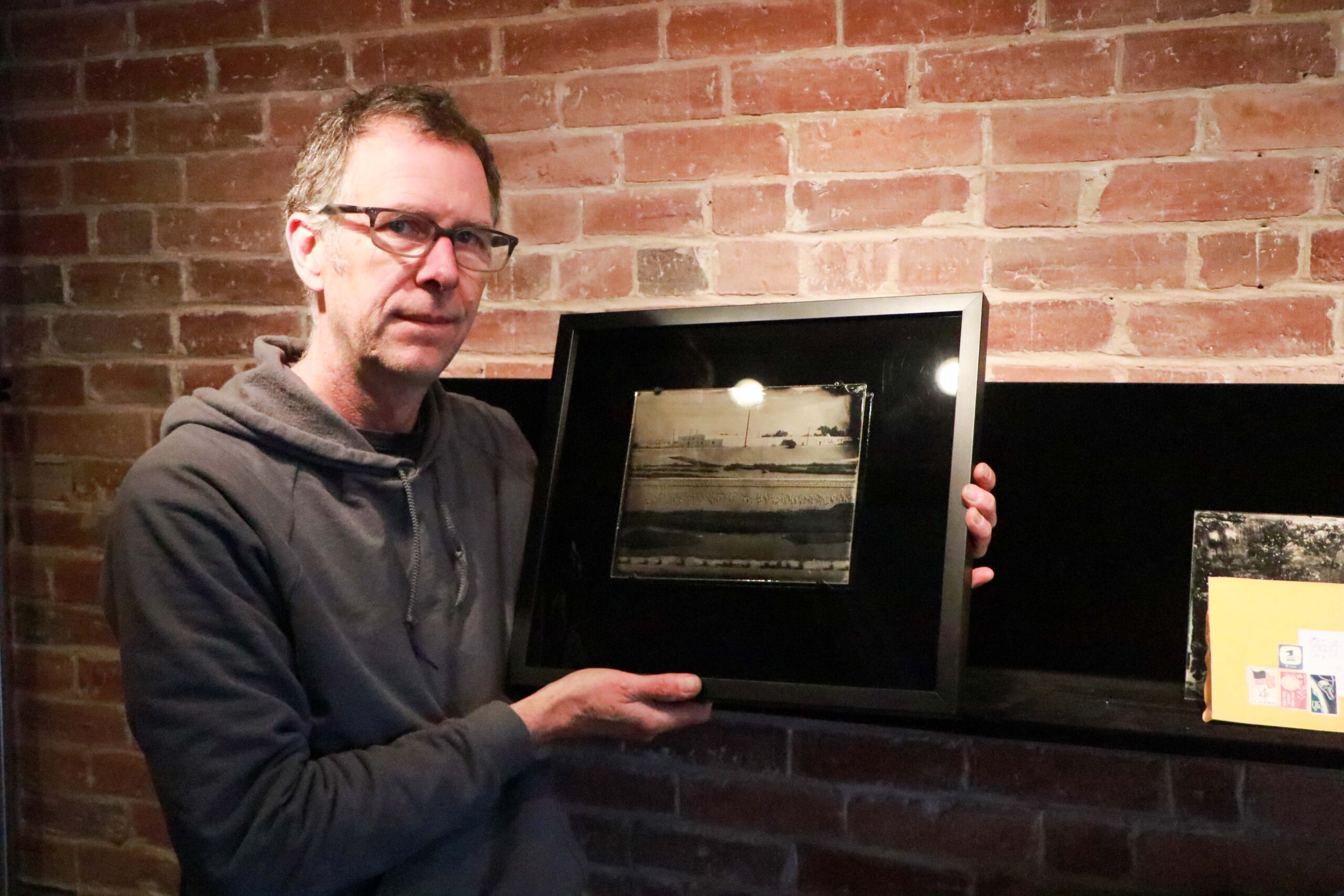Prof. Kolster redefines the L.A. River in new book
October 18, 2019
 Cole van Miltenburg
Cole van MiltenburgA living testament to the rise of a city and its natural remnants, the Los Angeles River was a one-of-a-kind subject for professor of art Michael Kolster. In his new book “L.A. River,” Kolster captures the river through a 19th century lens, questioning conventional notions of time and technical progress.
Last Thursday in Hawthorne-Longfellow Library’s Nixon Lounge, Kolster presented his work to the college community at a book launch moderated by Associate Professor of History and Environmental Studies Matthew Klingle. Associate Professor of Romance Languages and Literatures Margaret Boyle and Alyce McFadden ’20, also spoke at the launch about their interactions with the river as residents of Los Angeles.
This book comes as a companion volume to Kolster’s 2016 book “Take Me to the River,” which explored the effects of 20th century industrialization on the Androscoggin and three other East Coast rivers. Kolster similarly highlights human impact on the environment in “L.A. River,” but this time shifts his focus towards the distinct urban setting of Los Angeles and its adjacent San Fernando Valley.
The unique origins of the L.A. River cannot go unnoticed when discussing it in a modern-day context. At a time when the city was rapidly expanding, a flood ravaged the land, buildings and communities along its banks. The Army Corps of Engineers channelized the river in response, giving it a slanted concrete bed of 50 miles to hold a greater capacity of floodwater.
“Los Angeles is like a base, surrounded by these tall mountains whenever it rains, and people don’t realize it, but there are moments of severe rain storms in the area,” Kolster said. “And when that happens … a lot of water flows through these things.”
In this effort to protect its urban frontier, the natural environment was irreparably damaged and altered, which Kolster noted closely throughout his artistic process.
“[I was] thinking about the relationship that we have to trying to engineer these huge solutions that have natural repercussions,” Kolster said.
Though limited, nature’s presence—alongside the concrete structures and telephone wires which make up an urban landscape—is captured in Kolster’s work.
However, what stands out most about the book is its long-exposure, black-and-white photographs marked with blemishes around the edges. Kolster’s choice to portray modern-day settings through an aged lens was not only an aesthetic one, but also points to the ever-changing state of the environment and historical context of its surroundings.
“All of the images are made on site and they’re handmade,” Kolster said. “That’s kind of a strange thing to think about these days because right now we have digital cameras or phones.”
The process used by Kolster is coined the “colloidal method” and dates back to 1850, when photographs were produced on glass plates rather than rolls of film. Creating and developing these films involves mixing chemicals to produce a wet plate which is inserted into a camera and eventually produces a negative imprint on the plate. In order to emulate this method, Kolster created a makeshift, portable dark room shrouded from light that he could transport from site to site around Los Angeles.
What is inconvenient to some made all the difference to Kolster in his final product. Kolster sees the images’ imperfections as symbols of the natural environment’s dynamism.
“All these things start to reference the dynamic and unpredictable nature of the river itself. Every time you go to a river, it looks different, right? Moving water changes what you see, on a moment to moment basis,” he said.
In addition, the colloidal method speaks to the history of the river. California was declared a state in 1850, around the same time when this process of photo-taking became widely embraced. Moreover, Kolster emphasized, this was when the Los Angeles area experienced an influx of settlers and began to surge in population.
“The coincidence of photography and the technology that allowed for us to make pictures of places was basically happening at the same time as we started changing those places so irrevocably,” Kolster said.
Kolster’s decision to embrace this portrayal of the river required an unusually large amount of time and dedication. First, he embarked on a cross-country road trip to bring the necessary equipment for the project to L.A.. He then staked out different locations along the river, often spending all day at the same spot, setting up his equipment and shooting.
Co-Director of the Bowdoin College Museum of Art Frank Goodyear applauds these efforts as key to the end result of the book.
“I think part of [Kolster’s] project in this is to make visible something that is largely invisible in this huge urban center,” he said. “I think this project is sort of a reminder that urban space is built atop a natural world. We sometimes lose sight of the fact that in the midst of a city … there is a natural environment.”

Comments
Before submitting a comment, please review our comment policy. Some key points from the policy: